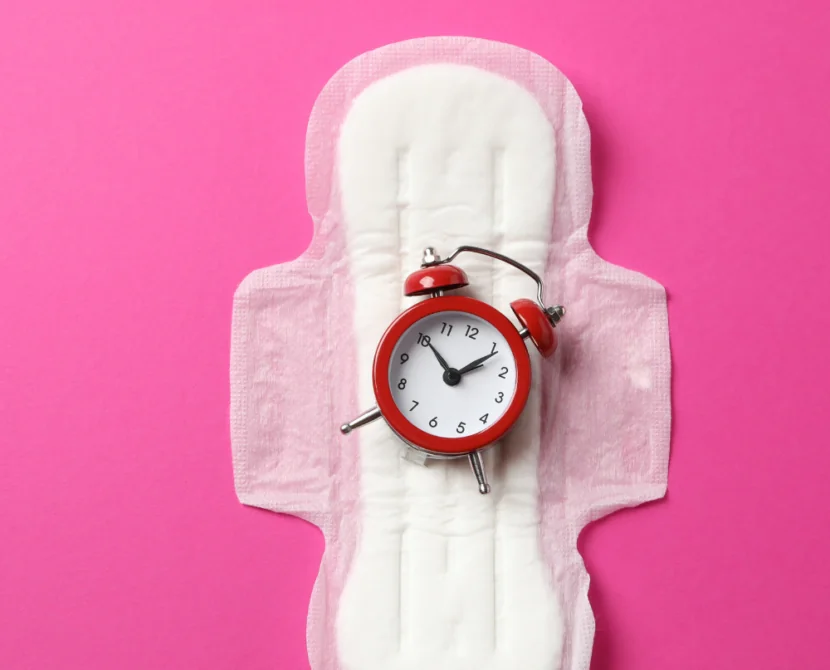Managing Menopause: Navigating a Challenging Transition

Hot flashes. Trouble sleeping. Sudden changes in mood. Problems with your bladder. Pain during sex. These are all common but uncomfortable symptoms of the transition to menopause.
Menopause isn’t a disease or disorder. It’s a normal part of a woman’s life. Menopause marks the end of menstrual cycles and fertility. Even though it’s a natural process, the transition to menopause can be difficult for some women.
Researchers have been working to better understand menopause. Today, women have more options than ever before to help them feel healthy during and after this midlife transition.
Starting the Transition
The ovaries contain all of the eggs at birth they will ever contain. The menstrual cycle controls the monthly release of eggs until menopause. The menopausal transition starts when this process changes and production of hormones like estrogen begins to decline. Most women start this transition (also called perimenopause) in their late 40s. But it can happen earlier or later.
During this time, women may experience certain symptoms, such as changes in their periods and hot flashes. If a woman hasn’t had a period in 12 months, she can say she’s entered menopause. But for many women this transition is less clear.
“Around one in eight women enter menopause because of a medical intervention, like having their ovaries removed surgically,” says Dr. Sarah Temkin, a women’s health expert at NIH. If this happens, they enter menopause suddenly, with no transition. The bothersome symptoms that they experience are often more significant than if they had entered menopause naturally.
If you haven’t had a period in a year, blood tests can verify that you’ve reached menopause. But no test can confirm when you’ve begun the transition into menopause. If you have symptoms, your doctor may order tests to rule out health conditions.
The menopausal transition usually lasts around seven years. But it can be shorter or longer. Women who don’t want to get pregnant should still use birth control for at least 12 months after their last period.
Cooling Hot Flashes Down
Many women experience only mild symptoms during perimenopause. For others, symptoms are severe and can interfere with work and life. The most common are called vasomotor symptoms. These include hot flashes and night sweats (see the Wise Choices box).
“A lot of symptoms can be interrelated,” says Dr. Andrea LaCroix, a menopause researcher at the University of California, San Diego. “If you have hot flashes, they might interfere with your sleep. Then once you get sleep deprived, you don’t feel so good overall.”
If you have mild hot flashes, you may be able to manage them with lifestyle changes. These include dressing in layers that can be removed, carrying a portable fan, and avoiding alcohol and caffeine.
Women with severe symptoms now have several drug options to consider. Some women can safely use menopausal hormone therapy, or MHT. Two decades ago, hormone therapy for women in the menopausal transition fell out of favor. Doctors had concerns about the risk of breast cancer, heart disease, stroke, and blood clots from hormone therapy. These concerns were based on a large study that tested hormone therapy to prevent chronic disease in older women. The study showed higher chronic disease risk for some women taking MHT.
More recent studies have confirmed these findings but also found that healthy, younger women who use MHT don’t have the same increased risk as older women. Talk with your health care provider about the potential risks and benefits if you’re considering MHT.
Some women can’t use hormone therapy because of certain personal risk factors. Others may not want to use it. “But there are other treatment choices,” says LaCroix.
LaCroix and others have found that an antidepressant called escitalopram can reduce the number and intensity of hot flashes for some women. Recently, a new drug called fezolinetant was approved by the U.S. Food and Drug Administration for treating hot flashes. It works by acting on part of the brain that regulates temperature.
“All of these treatments have been found to be helpful, so women have choices.” LaCroix says.
Tackling Other Symptoms
Many women struggle with sleep during the menopausal transition. Studies have found that a type of talk therapy called cognitive behavioral therapy, or CBT, can help women with sleep problems during this time of their lives.
Physical activity, yoga, and mindfulness can also help women feel better, stronger, and more in control of their reactions to many symptoms, LaCroix explains, even though these strategies likely do not directly impact the number or severity of hot flashes.
Some women experience sexual problems during their transition. These can include vaginal dryness, painful sex, and reduced desire. Others have heavy or irregular bleeding, Temkin explains. Many of these problems have treatments women can try. But women often don’t know about these options, she says.
“There’s a huge amount of stigma about women talking about their reproductive health,” Temkin says.
“Women sometimes feel, going through the menopausal transition, that they’re in it alone,” agrees Dr. Chhanda Dutta, an aging expert at NIH. “And while women experience this transition in very different ways, they need to be aware that they’re not alone.”
NIH-funded researchers created a website to help women better understand their experiences. It’s called MyMenoplan.org. It has tools to help you track symptoms and compare potential treatments.
Health in Midlife and Beyond
Lifestyle changes can help you stay healthy during and after midlife. The risks for some health problems go up after menopause. These include heart problems, bone weakness, and diabetes. Whether this is due to menopause or the overall aging process isn’t clear.
“But the advice is the same as for all through our lives,” Dutta says. “Focus on good nutrition. Get good sleep. Manage your stress levels. Be physically active.”
Such lifestyle changes can help reduce some menopausal symptoms and boost overall health, Dutta says. This can help women feel as healthy as possible from day to day.
References
Original Source: NIH News in Health
Lights on MsFLASH: a review of contributions. Reed SD, LaCroix AZ, Anderson GL, Ensrud KE, Caan B, Carpenter JS, Cohen L, Diem SJ, Freeman EW, Joffe H, Larson JC, McCurry SM, Mitchell CM, Newton KM, Sternfeld B, Guthrie KA. Menopause. 2020 Apr;27(4):473-484. doi: 10.1097/GME.0000000000001461. PMID: 31977667.
The menopause transition and women’s health at midlife: a progress report from the Study of Women’s Health Across the Nation (SWAN). El Khoudary SR, Greendale G, Crawford SL, Avis NE, Brooks MM, Thurston RC, Karvonen-Gutierrez C, Waetjen LE, Matthews K. Menopause. 2019 Oct;26(10):1213-1227. doi: 10.1097/GME.0000000000001424. PMID: 31568098.
An empowerment model for managing menopause. Hickey M, LaCroix AZ, Doust J, Mishra GD, Sivakami M, Garlick D, Hunter MS. Lancet. 2024 Mar 9;403(10430):947-957. doi: 10.1016/S0140-6736(23)02799-X. Epub 2024 Mar 5. PMID: 38458214.
The Women’s Health Initiative randomized trials and clinical practice: A review. Manson JE, et al. JAMA. 2024. PMID: 38691368 Review.




